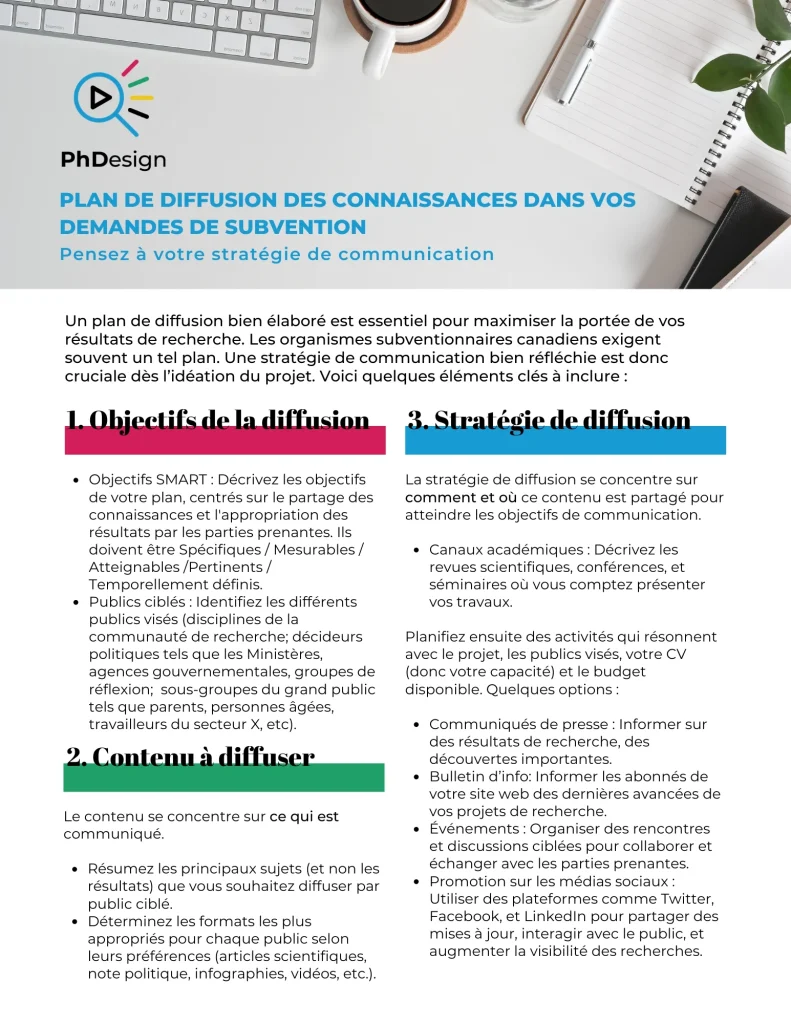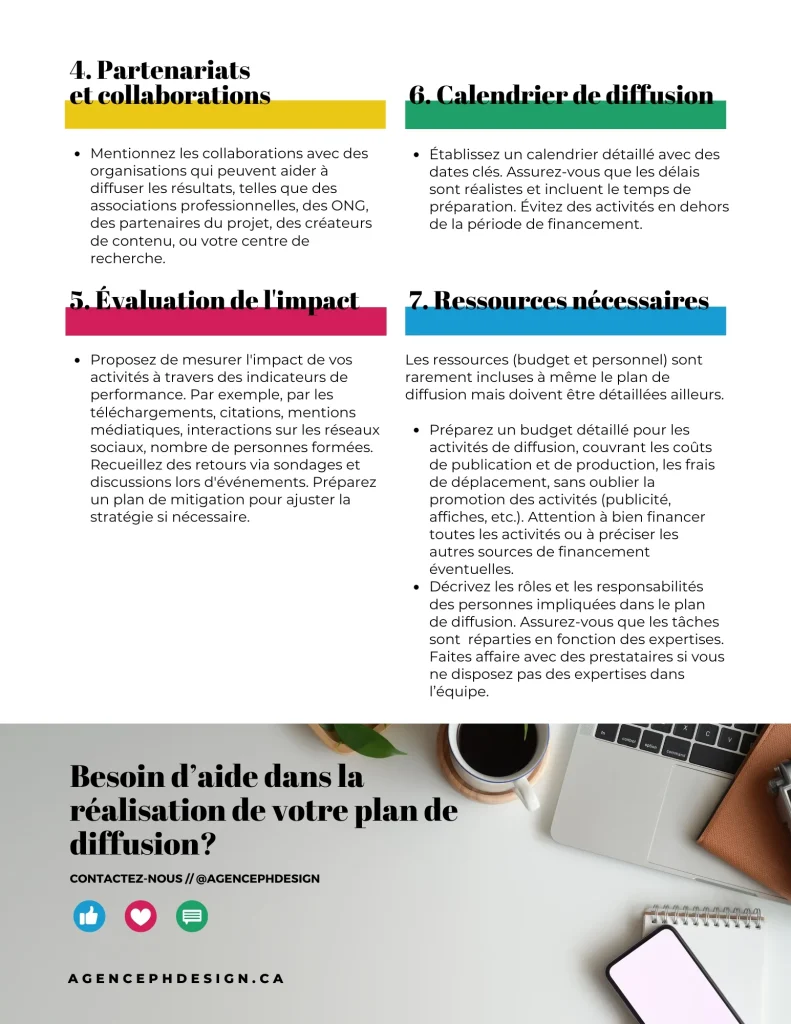Producing results is a crucial step in the research process… but it’s only the beginning!
The real value of research lies in its ability to be shared, understood and used by the people who need it most.
This is where a well-developed, upstream knowledge dissemination plan comes into play.
In this blog post, we’re highlighting a summary sheet just created for you, which guides you through the creation of this essential plan.
Why is knowledge dissemination crucial?
- Increase the visibility and impact of knowledge – Effective knowledge dissemination not only increases the visibility of research results, but also serves as a breeding ground for the development of new knowledge. Depending on the discipline, this can play a key role in attracting the attention of governments and stakeholders, thereby facilitating the implementation of research findings into public policy and practice.
- Overcoming certain barriers to knowledge appropriation – A well-designed dissemination plan overcomes certain barriers to the appropriation of new knowledge. By targeting the right audiences with clear, appropriate messages, the research community can ensure that its discoveries are heard. However, disseminating knowledge is a necessary but not sufficient step towards adoption. We need to take the process a step further, with a genuine knowledge mobilization strategy.
- Strengthening collaboration and partnerships – Knowledge dissemination encourages collaboration between the research community and potential knowledge users. By involving stakeholders throughout the research process, it is possible to co-create solutions that better respond to real needs, and increase the chances of successful implementation of results.
Barriers to knowledge dissemination
Despite the importance of disseminating knowledge, there are a number of factors that sometimes hinder researchers’ commitment to this crucial process.
These obstacles include :
Lack of time and funding
Having generally dealt with the “hazards of research” during the project, time runs out at the end.
The time available is often used to obtain new research funding, in order to keep the teams in place. Lack of financial resources to finalize dissemination work and promote results can be another major obstacle.
Publication race
The pressure to publish quickly in academic journals can divert teams’ attention from other dissemination activities, which are often perceived as secondary.
One study showed that researchers feel strong pressure to publish, which can prevent them from devoting time to communicating results to non-specialists or study participants.
This race to publish can also lead to a fragmentation of dissemination efforts, with researchers focusing more on producing new articles rather than communicating existing results (Johann et al., 2024) (1).
Lack of expertise
It’s not easy to wear all the hats that come with being a researcher (manager, research analyst, accountant, writer, videographer, graphic designer, fire extinguisher ;-).
You have to know how to raise your hand and ask for help, either from your institution if it offers communications services, or from an external service provider like our agency.
Complex political and institutional processes
The complexity of political and institutional processes can also hamper the dissemination of knowledge.
Researchers often have to navigate complex bureaucratic systems to reach policy-makers and other stakeholders.
One study found that researchers perceive political processes as a major challenge to knowledge dissemination, due to differences in objectives and priorities between researchers and decision-makers (NCBI, 2018) (2).
Presentation of our summary sheet on knowledge dissemination
Our summary sheet gives you an overview of the elements to consider when creating an effective knowledge dissemination plan. It covers key aspects such as defining SMART objectives to guide your efforts, accurately identifying target audiences to personalize your messages, and choosing the most appropriate dissemination formats and channels for each audience. This fact sheet is designed to help you structure and optimize your distribution strategy, maximizing the impact and reach of your research.
Access the PDF summary.


The last word
The dissemination of knowledge is a fundamental pillar of scientific research.
It enables research results to be transformed into concrete actions with a significant impact on society.
Our summary on agencephdesign.ca offers you a detailed guide to developing an effective distribution plan, maximizing the reach and impact of your work. If you found this post useful, please share it.

